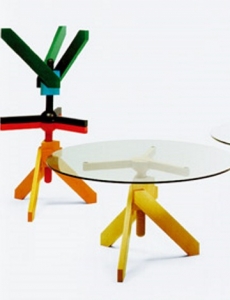Vico Magistretti, who passed away on September 19 2006, was one of the undisputed masters of Italian industrial design. Born in Milan in 1920 and an architect since 1945, he was among the promoters of Adi, and a winner of innumerable prizes and recipient of many international accolades. A leading player in sixty years of activity in the country’s most noteworthy cultural changes, he helped to shift everyday taste in the direction of comfortable modernity, creating, more so than other architects and designers of his generation, designs that would blend seamlessly with domestic and not only domestic environments, interpreting change and new demands with remarkable relevance.
 [/imageframe]
[/imageframe]His creations are functional objects that are easy to understand and are defined by readily identifiable aesthetics, many of which are on show in the world’s principal design collections as symbols of Italy’s special and distinctive design and production capacities. Magistretti supplied an idea – the true role of the designer – which he visualised with sketches, to put the form in his mind onto paper, and verify its feasibility.
 [/imageframe]
[/imageframe]The designs and the actual objects themselves were then produced in collaboration with the clients and their technical development departments. This method was once a unique, defining characteristic of Italian design: it gave designers ongoing practical feedback on their innovative intuitions and inventions and allowed the craftsmen and later the industrialists of furnishing to develop a specific design culture.
 [/imageframe]
[/imageframe]Objects which are made so striking by the sheer force of their decisive, certain intuitiveness, the result not so much of a theoretical or ideological contemplation as of a practical, rational and logical design and the creation of a balance between a trend to modernity and dialogue with the memory.
The article continues in Auto & Design no. 161










